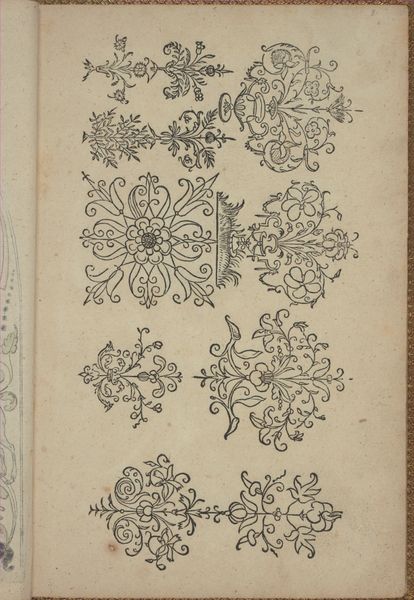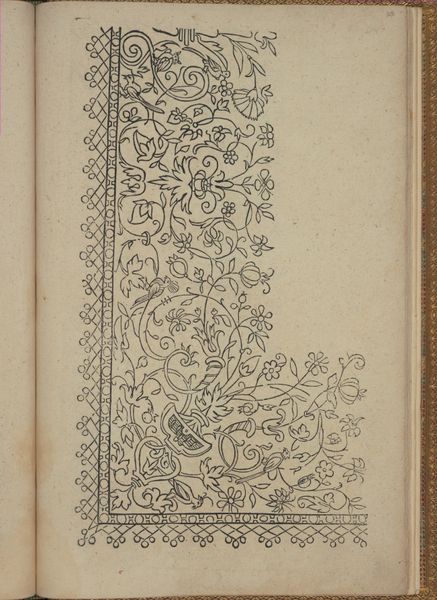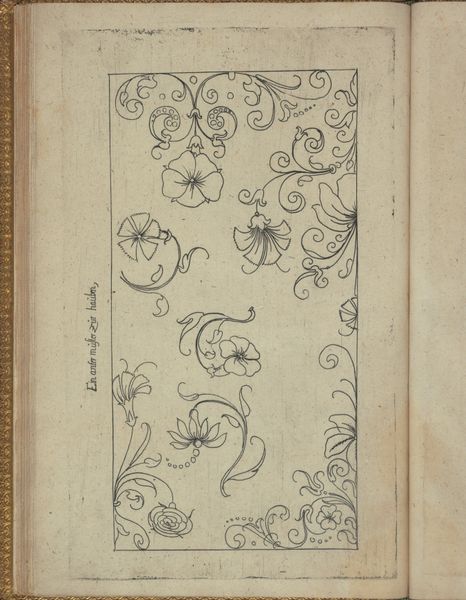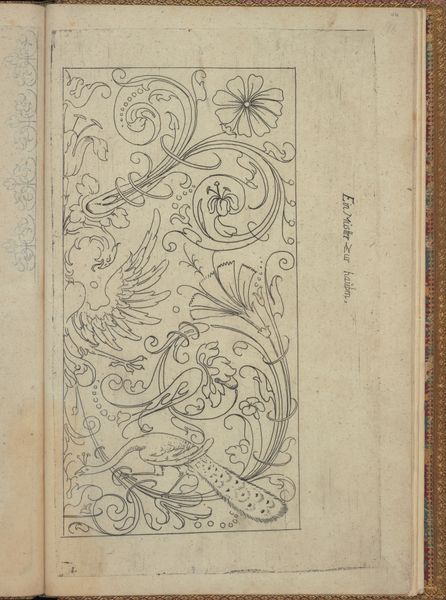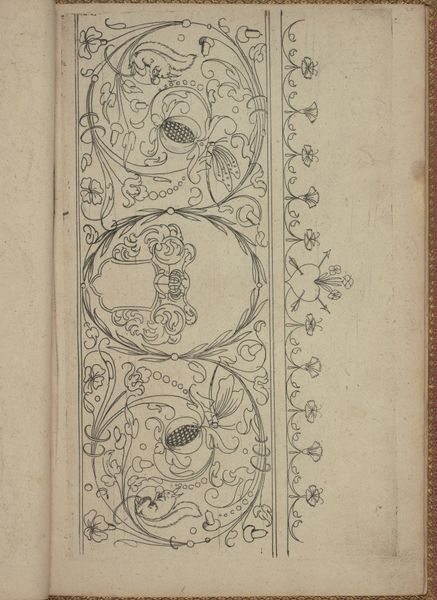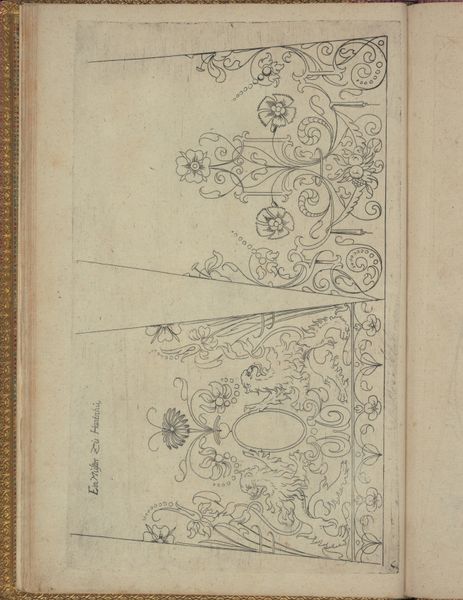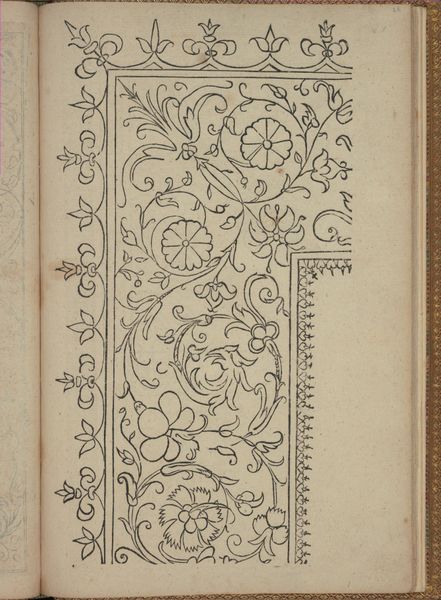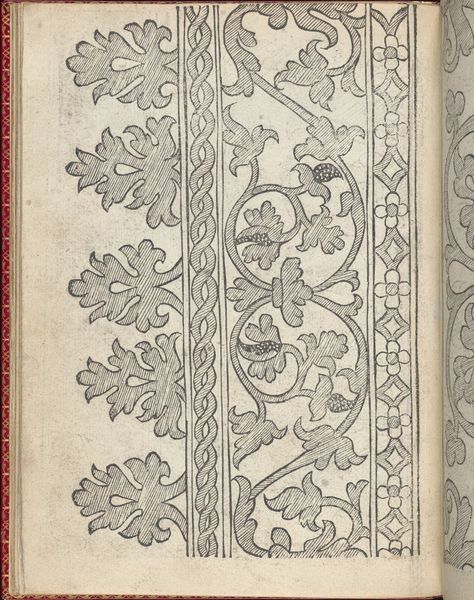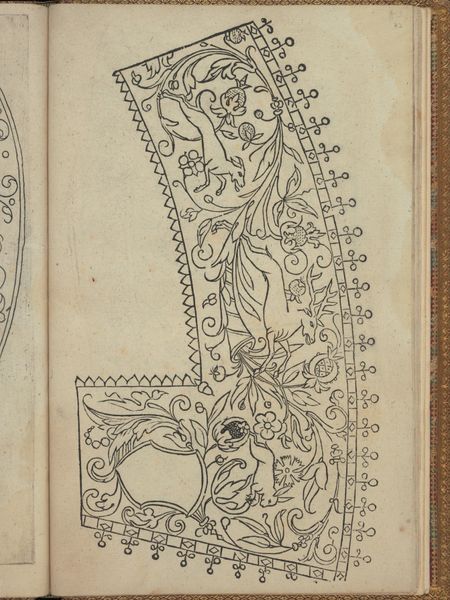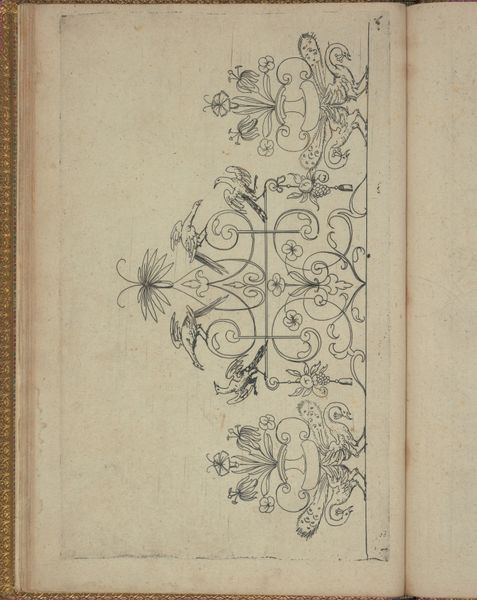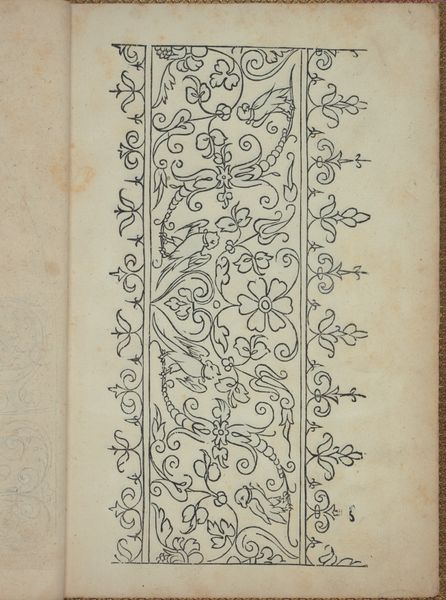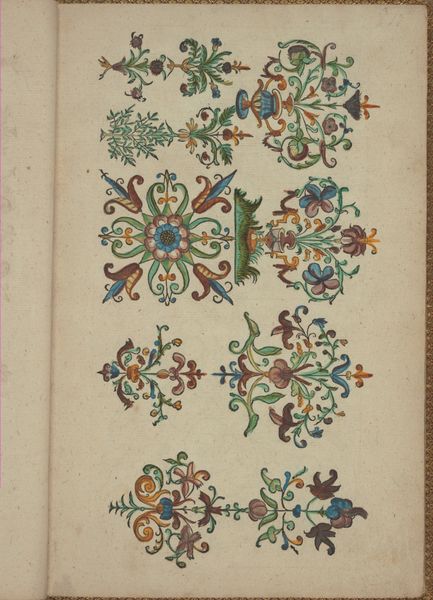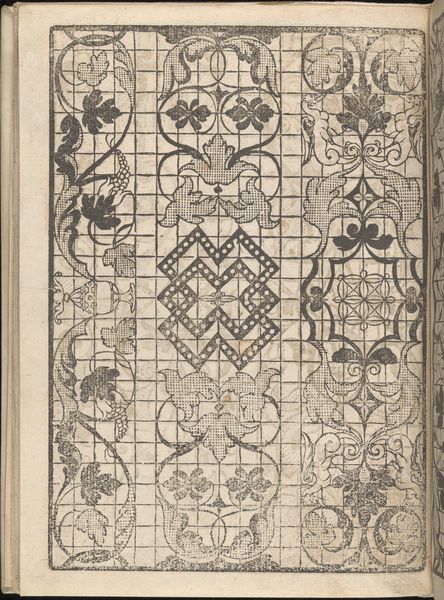
drawing, print, engraving
#
drawing
# print
#
form
#
11_renaissance
#
line
#
engraving
Dimensions: Overall: 12 x 8 1/16 in. (30.5 x 20.5 cm)
Copyright: Public Domain
Editor: This is a page from Andreas Bretschneider's "New Modelbüch," created in 1615. It looks like an engraving or print. My first impression is of highly formalized floral and heraldic imagery arranged as if in a design catalog. What catches your eye here? Curator: Well, the careful arrangement speaks volumes. Consider the symbolic weight of these recurring motifs. The lion, for instance, a figure laden with connotations of courage and royalty. It appears alongside more delicate floral patterns; it reflects an ordered worldview. What does it evoke for you, seeing them paired? Editor: I suppose it highlights the tension between nature and culture. Is that a common theme in works like this? Curator: Indeed. In "model books," this was standard practice. Observe the borders themselves. They don't merely frame the image. The lines function as more than just a delineation of space; these repeated motifs create a visual echo. What feelings arise when you focus on them? Do they confine or liberate the images within? Editor: That's an interesting point, I hadn't thought of the borders in that way. I initially saw them as purely decorative. Now I'm wondering if these "Modelbüch" served as a kind of cultural script, reinforcing shared visual language. Curator: Precisely. These images, distributed widely via prints, influenced artistic vocabularies across Europe, embedding specific visual concepts within the collective memory. The cultural lifespan of symbols extends far beyond their immediate creation. These echoes create meaning! Editor: I see it now. Thanks to understanding the symbolic and visual language, this engraving really speaks to Renaissance visual culture in a new way!
Comments
No comments
Be the first to comment and join the conversation on the ultimate creative platform.
